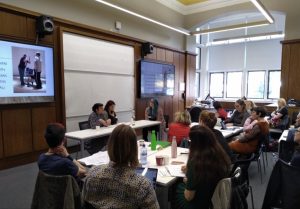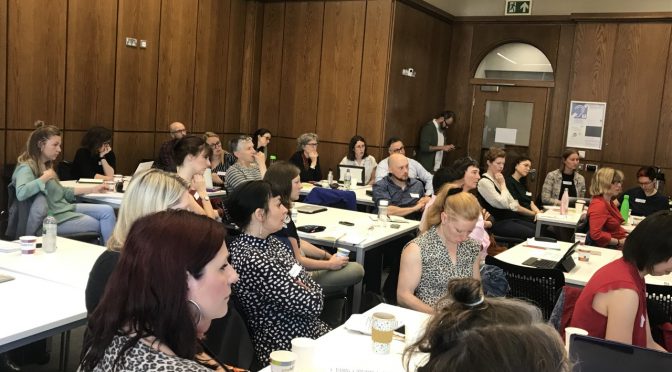On Wednesday 5th of June 2019, the Military War and Security Research Group at Newcastle University hosted an intensive one-day workshop on ‘Creative Methods in Military Studies’.
This event emerged out of an awareness that there are so many of us doing really interesting creative projects that in some way approach military power and experience, creative in the sense that projects were finding new ways of using established approaches, or were developing creative practices as methods in themselves. And yet, despite all this great work being done in military studies, there hadn’t been much opportunity for real conversations about what these creative approaches could bring to our research. So, what we really wanted to do in this workshop was bring some of this work together, and explore a few key questions:
- What constitutes ‘creative research’ in military studies?
- What can creative methods offer our understanding of military power and militarised cultures?
- What are some of the challenges of this type of work?
We ended up with a huge amount of interest in the event (which I think is indicative of how open to this way of working critical military studies folk are!) and on the day had 45 participants from as far away as Norway and the United States (you can see the final programme for the event here). This included academic researchers of all career stages, veterans (or those who identify instead as ex-military), artists, creative practitioners, and psychologists – so, it was a really diverse group. The range of creative approaches we heard about included military theatre (such as Alice Cree’s collaborative work with Workie Ticket Theatre Company and female veterans in ‘Women Warriors’) and Sarah Bulmer, Victoria Basham and David Jackson’s work on Lola Arias’ ‘Minefield’), sound installations, model making, photography, song-writing (you can read about Hannah West’s work on this here), dance, fiction, creative approaches to teaching Critical Military Studies, and more. We had some great conversations around ethics (is there a distinct ethics to making military experience ‘interesting’ through creativity?), data and analysis (what do we consider to be our ‘data’ in these creative works, and how do we analyse them?), representation (who gets to speak for whom?), and collaboration (what is the ‘value added’ of collective creative engagement?).
Across the presentations and conversations, several threads emerged. Relationships are important, between academics and practitioners, between academic-practitioners and audiences, and with different types of audiences, which might be civilian or military or both. There are always issues around military involvement in research practice, and issues of control, accountability, transparency, gate-keeping, involvement and non-involvement. The spaces of creative engagement and creative practice, and of engagements with audiences, are multiple and varied, and we wondered how these different spaces shape or allow engagements of researchers with military phenomena, and shape relationships between academic-practitioners and audiences. There is also the question about the ultimate purpose of activities that identify as ‘creative’; is it to find new representational forms, or new audiences, or new ways of addressing research questions, or all these in combination?

There is something we’ve been left mulling over though…What is it about creative approaches that can help us specifically in our work on and with military power? After hearing about all of this really interesting and critically engaging work that people are doing in critical military studies, it seems that there is definitely something useful in looking beyond typical modes of research and representation in this work. One of the common threads that connected many of the presentations related to embodiment and lived experience. Melanie Friend’s work on the militarised landscape of Salisbury Plain for example considered how different people experienced the ‘militarised’ sounds of the space, while Lindsay Clark’s ideas around ‘drone dance’ considered how choreographed bodily movement might help us to think differently about embodiment in disembodied warfare. In both of these examples, as with many of the others that we heard from, creative methods or forms were used in some way to explore aspects of military power and military experience that are not otherwise accounted for. Victoria Basham & Sarah Bulmer (2017) tell us that we must out of necessity think differently about what it means to practice critique in military studies, arguing that “[t]his recognition has profound implications for feminist praxis because it compels us to ask the question: What remains hidden if we fail to get closer to that which we critique?” (p68). Is part of the value of creative approaches in military studies therefore that they can help us to get closer to that which we critique, by tapping into the lived, the felt, the embodied, and the sensory experiences of military power? If we are committed to deepening our critical engagement with militaries and their practices of power then it seems that creative methods have a lot to offer, and so maybe we should be doing more of it.
We’re currently thinking about what to do next, and in particular whether we should develop a publication of some kind bringing together different stories about approaches which in some way use creative methods or practices to address military phenomena. If you’re interested in joining the conversation, get in touch.
Alice Cree and Rachel Woodward

